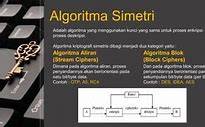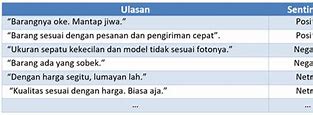
Simple and widely known encryption technique
In cryptography, a Caesar cipher, also known as Caesar's cipher, the shift cipher, Caesar's code, or Caesar shift, is one of the simplest and most widely known encryption techniques. It is a type of substitution cipher in which each letter in the plaintext is replaced by a letter some fixed number of positions down the alphabet. For example, with a left shift of 3, D would be replaced by A, E would become B, and so on.[1] The method is named after Julius Caesar, who used it in his private correspondence.
The encryption step performed by a Caesar cipher is often incorporated as part of more complex schemes, such as the Vigenère cipher, and still has modern application in the ROT13 system. As with all single-alphabet substitution ciphers, the Caesar cipher is easily broken and in modern practice offers essentially no communications security.
The transformation can be represented by aligning two alphabets; the cipher alphabet is the plain alphabet rotated left or right by some number of positions. For instance, here is a Caesar cipher using a left rotation of three places, equivalent to a right shift of 23 (the shift parameter is used as the key):
When encrypting, a person looks up each letter of the message in the "plain" line and writes down the corresponding letter in the "cipher" line.
Deciphering is done in reverse, with a right shift of 3.
The encryption can also be represented using modular arithmetic by first transforming the letters into numbers, according to the scheme, A → 0, B → 1, ..., Z → 25.[2] Encryption of a letter x by a shift n can be described mathematically as,[3]
Decryption is performed similarly,
(Here, "mod" refers to the modulo operation. The value x is in the range 0 to 25, but if x + n or x − n are not in this range then 26 should be added or subtracted.)
The replacement remains the same throughout the message, so the cipher is classed as a type of monoalphabetic substitution, as opposed to polyalphabetic substitution.
The Caesar cipher is named after Julius Caesar, who, according to Suetonius, used it with a shift of three (A becoming D when encrypting, and D becoming A when decrypting) to protect messages of military significance.[4] While Caesar's was the first recorded use of this scheme, other substitution ciphers are known to have been used earlier.[5][6]
"If he had anything confidential to say, he wrote it in cipher, that is, by so changing the order of the letters of the alphabet, that not a word could be made out. If anyone wishes to decipher these, and get at their meaning, he must substitute the fourth letter of the alphabet, namely D, for A, and so with the others."
His nephew, Augustus, also used the cipher, but with a right shift of one, and it did not wrap around to the beginning of the alphabet:
"Whenever he wrote in cipher, he wrote B for A, C for B, and the rest of the letters on the same principle, using AA for Z."
Evidence exists that Julius Caesar also used more complicated systems,[7] and one writer, Aulus Gellius, refers to a (now lost) treatise on his ciphers:
"There is even a rather ingeniously written treatise by the grammarian Probus concerning the secret meaning of letters in the composition of Caesar's epistles."
It is unknown how effective the Caesar cipher was at the time; there is no record at that time of any techniques for the solution of simple substitution ciphers. The earliest surviving records date to the 9th-century works of Al-Kindi in the Arab world with the discovery of frequency analysis.[8]
A piece of text encrypted in a Hebrew version of the Caesar cipher is sometimes found on the back of Jewish mezuzah scrolls. When each letter is replaced with the letter before it in the Hebrew alphabet the text translates as "YHWH, our God, YHWH", a quotation from the main part of the scroll.[9][10]
In the 19th century, the personal advertisements section in newspapers would sometimes be used to exchange messages encrypted using simple cipher schemes. David Kahn (1967) describes instances of lovers engaging in secret communications enciphered using the Caesar cipher in The Times.[11] Even as late as 1915, the Caesar cipher was in use: the Russian army employed it as a replacement for more complicated ciphers which had proved to be too difficult for their troops to master; German and Austrian cryptanalysts had little difficulty in decrypting their messages.[12]
Caesar ciphers can be found today in children's toys such as secret decoder rings. A Caesar shift of thirteen is also performed in the ROT13 algorithm, a simple method of obfuscating text widely found on Usenet and used to obscure text (such as joke punchlines and story spoilers), but not seriously used as a method of encryption.[13]
The Vigenère cipher uses a Caesar cipher with a different shift at each position in the text; the value of the shift is defined using a repeating keyword.[14] If the keyword is as long as the message, is chosen at random, never becomes known to anyone else, and is never reused, this is the one-time pad cipher, proven unbreakable. However the problems involved in using a random key as long as the message make the one-time pad difficult to use in practice. Keywords shorter than the message (e.g., "Complete Victory" used by the Confederacy during the American Civil War), introduce a cyclic pattern that might be detected with a statistically advanced version of frequency analysis.[15]
In April 2006, fugitive Mafia boss Bernardo Provenzano was captured in Sicily partly because some of his messages, clumsily written in a variation of the Caesar cipher, were broken. Provenzano's cipher used numbers, so that "A" would be written as "4", "B" as "5", and so on.[16]
In 2011, Rajib Karim was convicted in the United Kingdom of "terrorism offences" after using the Caesar cipher to communicate with Bangladeshi Islamic activists discussing plots to blow up British Airways planes or disrupt their IT networks. Although the parties had access to far better encryption techniques (Karim himself used PGP for data storage on computer disks), they chose to use their own scheme (implemented in Microsoft Excel), rejecting a more sophisticated code program called Mujahedeen Secrets "because 'kaffirs', or non-believers, know about it, so it must be less secure".[17]
The Caesar cipher can be easily broken even in a ciphertext-only scenario. Since there are only a limited number of possible shifts (25 in English), an attacker can mount a brute force attack by deciphering the message, or part of it, using each possible shift. The correct description will be the one which makes sense as English text.[18] An example is shown on the right for the ciphertext "exxegoexsrgi"; the candidate plaintext for shift four "attackatonce" is the only one which makes sense as English text. Another type of brute force attack is to write out the alphabet beneath each letter of the ciphertext, starting at that letter. Again the correct decryption is the one which makes sense as English text. This technique is sometimes known as "completing the plain component".[19][20]
Another approach is to match up the frequency distribution of the letters. By graphing the frequencies of letters in the ciphertext, and by knowing the expected distribution of those letters in the original language of the plaintext, a human can easily spot the value of the shift by looking at the displacement of particular features of the graph. This is known as frequency analysis. For example, in the English language the plaintext frequencies of the letters E, T, (usually most frequent), and Q, Z (typically least frequent) are particularly distinctive.[21] Computers can automate this process by assessing the similarity between the observed frequency distribution and the expected distribution. This can be achieved, for instance, through the utilization of the chi-squared statistic[22] or by minimizing the sum of squared errors between the observed and known language distributions.[23]
The unicity distance for the Caesar cipher is about 2, meaning that on average at least two characters of ciphertext are required to determine the key.[24] In rare cases more text may be needed. For example, the words "river" and "arena" can be converted to each other with a Caesar shift, which means they can produce the same ciphertext with different shifts. However, in practice the key can almost certainly be found with at least 6 characters of ciphertext.[25]
With the Caesar cipher, encrypting a text multiple times provides no additional security. This is because two encryptions of, say, shift A and shift B, will be equivalent to a single encryption with shift A + B. In mathematical terms, the set of encryption operations under each possible key forms a group under composition.[26]
%PDF-1.7 4 0 obj (Identity) endobj 5 0 obj (Adobe) endobj 8 0 obj << /Filter /FlateDecode /Length 88100 /Length1 367020 /Type /Stream >> stream xœì} |TÕÙþ{î½3sg¿³ï™}’Ìd#“=!™lì� (‰„UÅ°ˆ»«¢¨•Vë^¥VÕ¶„‰KTýªZ±jÅÖ Vjm+Ê×¢m•dþï¹H¨ôû•Oê—?œ'9ÏYï¹çžå=ç¼÷Þ¹@ À…$Àæ–ÇÍÅ%ð=2¾¥uœi³ý%ॠ¾f|û´ÆàkßÞÒäýIãgœÞ4àŸ á/lxhÒŒ™ãÎ�/Sâñb®9SfΘðòëÑï4ï0OŸ6£¸Ô}Éé pNŒïjož2óRÇ•Ÿaþ:ôWœÑÒÖ1ãG+Í g ˜n^xîüÀù'à1,\·6°öwÿø6pµ·ˆKºÏ>·òî%à‚ ” gÏ_Ó VPo<„ùIgŸsÑ’3뿸æç ÖŠK�{á•kÇßpöN �_³tñüEF:. wÑó/Å ‹`ïCÿëè�,=wí…×éŒ9xn¼žÆ³V,^½öƒ¸·—bšžsÎ[8ÿ[ Û>îq¼þÈ]çο°Û³ÐÚ„qX8wñÚùüÏÛèõ®œîâO~~Cp¿ý `ÌÁîóÖ¬ÍDàY,ïÛ4}÷êÅÝܼ®<àòJ ,Kå¶Q¬‡—+çë>]"PÜû^ù8jÿêÊÝ>¿v`¾âjL«–ÓS ¶Â, >¿ö3Gb†`X@CÌmÐàùðO‚b8kõN‡±<¿œ{ *îP$1ƒhÖæ·ÀÎL'ò*…‚ã…½P”Ù ž‰ÙªiÞ3Ûš€ŸŠƒãHR$;R@2™ý=Åz¥`SV/MÍ aô¿LßÿpÁÖ§xk kOGãQœùÂ{PDÔÕ�à}è°£»ãbª ÓùÐߎéʆŽ� k`9ÆOBwÉá<ÿ`ÞsñØLE{ÚÓ°¼MÞ†þq\5Äåtk Ý åC0…†cü$´si3Ë9�£åh*“ Ó£1è ¶M-šŠ�ïá>rTØC(_N È-™'àÿïÿÿSV†ÿKÈ
%PDF-1.7 %µµµµ 1 0 obj <>/Metadata 3571 0 R/ViewerPreferences 3572 0 R>> endobj 2 0 obj <> endobj 3 0 obj <>/ExtGState<>/ProcSet[/PDF/Text/ImageB/ImageC/ImageI] >>/Annots[ 20 0 R] /MediaBox[ 0 0 595.32 841.92] /Contents 4 0 R/Group<>/Tabs/S/StructParents 0>> endobj 4 0 obj <> stream xœÅ=Ù’Ü6’ïŠÐ?Ôc׆Š"ä„ñ-ùÒøÒZònLØóÀî®î¦«ú˜:¬Ñ~ý"'I º¬µŽp‹E‚D"‘w&€—ç›]wÝ^îf_|ñò|·k/o—W³ß^¾xüçË÷—/߶7Ý}»ëî_¾Û_ìàÖwËöj¹ùòËÙ«¯^ÏþõüYY”ð_]K2+gUSŒÎjNŠ†Î6ËçÏþç?f÷ÏŸ½zÿüÙËoÈŒÐÙûëçÏ i9#³ŠÓ¢³ºl "fïïT£oßÉÙÍV}wvƒ¿jóëÛçÏ~;£tþÏÙû¿?öµúÞ=vrÿô�ÝšÞfŸØÙ_ŒãeQ‰™„—Æpýý$$Œûúzsb_MÁë>ÊIAyª·o²÷&S]ýœ‰‚Œ'Çõ>÷¸$-X�ìîëù‚�½þ.w§ -š2Ùé§rK¡Ð:ÝÙïg™{k *’½�Êp#L’R½P§ISœýúËOó)ÏΘ/¨Âú·¿™/êܘ&Šv«äس "®iª»Ÿ¾™sé/?Îüìü=Œü�þO™‡NY]ðæ³q-QËžâÚEuöÓÏð÷¸ÃþVýÿ�¼#gJåÑäÈŸgî�°‚%{û|zvd =[øg×?¬‹ÓnÔ°Èíx‡$og²<ÔÙ‹ÙO¹‡×HÅÚŸkx¤d(HRÃËÝ[s ·Û9;Û,çòl7£%U¢›œ<ܦhÄHP7)N`¢Ù×?¾ž½L8¯v»‡»´?ðÍÃÃÎù bB'ÕŒDe͈‚Y÷zý9P¡ù–²B)í±ÆRbóÝ;¥G~Ê=jdDqT¼ßS nÜ/dïm¶€o×µÒ/—¿�ý-×êNb 3õi�ÝR)yîŽõ>Max‘½7†ft¼7:¸Vª·†‹ì#%J'rš¤%kõÍæMï×àÏç{x°ýÿT©‡™'‹ÖeÑÈÄd)á¯$Î-PÉ�Ò {E2Wð£�� û®}„{ø³Û tú~~¦µ‚7 äÛå=@°Ü dsåZ Xº+5Ò¾˜Ã hð¤›v†ï´Ûnv¾¾�Ëø³�áv»;3–SFÁ"¢½i¾x¤z‹ãØ"Ò7'õ®ô/”„íEhz~ _�[ѺH�Õ곯¾\0õïù+uýúËÌäRqtBóŽÔš³—oÁ�øñõ›¯f¥µ”·^¯"S%t©!•�P”µ³Ì»ïÛ{÷:yùC{3;ë®o¾šZä‘FfÚ�S8#~òZÞ+~©Ï�Ô•„Á‹û“�Ð(´TŽ¡L�ò½êùz¾SÔÑ!˜º…w&
Enkripsi merupakan salah satu teknik keamanan yang paling sering digunakan. Banyak data yang bisa di enkrip misal, isi pesan, citra digital(gambar), password penting dan lain sebagainya. Salah satu teknik dasar yang umum dipelajari dalam enkripsi ialah Caesar Cipher. Caesar Cipher merupakan salah satu teknik dasar yang sangat mudah dipelajari karena, pada dasarnya teknik caesar cipher hanya melakukan pergeseran karakter sesuai dengan value key yang diberikan oleh si pengaman data. "Maksud pergeseran karakter itu gimana ya?" Setiap huruf alphabet dimulai dari huruf A s.d. Z atau a s.d. z diberi nomor angka seperti berikut.
A = 0 B = 1 C = 2 D = 3 E = 4 F = 5 G = 6 H = 7 I = 8 J = 9 K = 10 L = 11 M = 12 N = 13 O = 14 P = 15 Q = 16 R = 17 S = 18 T = 19 U = 20 V = 21 W = 22 X = 23 Y = 24 Z = 25
catatan, bahwa pemberian nomor huruf ini tidak ada perbedaan antara huruf kecil atau huruf kapital. Nah, seperti pada keterangan diatas bahwa setiap huruf di beri nomor agar kita bisa melakukan proses enkripsi caesar cipher. Sebelum masuk ke coding, berikut rumus untuk Enkripsi dan Dekripsi Caesar.
Rumus Enkripsi --> C = (nomor_karakter_plain_text + key) mod 26
Rumus Dekripsi --> P = (nomor_karakter_cipher_text - key) mod 26
Setelah Anda tahu kedua rumus diatas, saatnya let's rock n roll bro. Berikut contoh kasusnya.
Diberikan sebuah kata seperti berikut.
Kemudian, ubahlah kata diatas dengan menggunakan teknik Enkripsi Caesar Cipher menggunakan key bulan lahir( si penulis lahir bulan desember jadi, key nya 12).
Berikut langkah-langkahnya:
Jadi, setelah dilakukan proses enkripsi maka, hasil akhir dari kata tersebut setelah di enkripsi ialah menjadi U MY BDASDMYYQD. Gimana? asik bukan belajar enkripsi. Jadi, kita bisa kirim-kiriman pesan rahasia deh sama pacar atau selingkuhan kita :D hehehehe....
Nah, sekarang bagaimana cara kita mengembalikan kata yang sudah di enkripsi tadi kembali menjadi plain text atau kata yang sebenarnya sebelum di enkrip.
Masih menggunakan kata yang sudah kita enkrip tadi dan key yang sama yakni 12. Berikut langkah-langkahnya.
Jadi, kata cipher diatas setelah di dekrip menggunakan Teknik Caesar maka, isi pesan sebenarnya ialah I AM PROGRAMMER. Dan berikut ialah source code di Java.
*/ public class Main { public static void main(String[] args) {
Berikut hasil program diatas.
%PDF-1.6 %âãÏÓ 1 0 obj <> endobj 2 0 obj <> /PageMode /UseNone /Type /Catalog >> endobj 3 0 obj <> /Font <> >> endobj 4 0 obj <> endobj 5 0 obj <> stream â£ö!Þðî{‘Dã—w¶i:ôÉËñâõ*khïàò£(Žã0ñ:|îHiV`¹¦7¿ŠpôHꪢ:ï×À1Ëqã¾öÂaŒípcNìð KÏþ©S™1‹zE¤ÚwËÛŒ6v‡-[ÃÖÅ ¸?éCÍ_¸R!r k¿ecj?ülÍ´ï=ÉÐàÆh‘œöl€(…+LU˜{ƒÑ¬Q¤ÈRèÐ�Ñcÿl¯((Èêù°HBF±×±> ´f±pÛ5÷§\ÁA¤Ð4ÿFóÚ—»p1¥b‘Vå:Œ&M`×,‰}Ð ±íâL‡à$yoÿ…€�1äƒæîŠ÷r˜m…eãÊ|WÙ8mÆõVÑõ÷œÕ]F?Ò{µ&V�Wx9ÈnkàXeq#ëü�;Itë<Âú!üQ,²w¯/ÿþ]=G?õjÈ£\3Fô‚FÚ©ÊTã�Ð÷p©%·�ÐÑ®Š¾›$,Sib9wÏ0"=%ñµ xÀÙ¤ VN1‰ŒN©…êtîƒ9E‘¨%<¥§-§`ÇÇ�÷Ì=ìîZ-Øç,þˆ‰ð¹Îü´ºn3I˜šTÇLþ‰ÿŒaþ/Æ6ö(Ú^fÑŽéZÏA@ ÃßE%pêâŽ7Ô .D.ŽåöŸfñ�‹Ÿ/á`SJÙÛ~b ™ÍY_á¯\%+Ô8cŽllªÐJ2ãb`‰t°*!|"+ÅÖÔÓô¹*†fhÅÙˆ«v+*êAi_\H§l¬ž#\ùq2Ðnw6)·¿Ä®qÓdzâê_-�X ¬pQk>|’ç…¨ÔµêÒ�dnI5è SžŒµ»$“½Rž=ZÖúìbÄѲ’Þ�h5{Ä0ØÁMG®„N§=Ž^¤1V«<9RQâüÚÁaííûÚQ�oQ!zõE›Äí·u™iš‰,ŠK1]×fÔgø¢’‰Ýšqq–ÒŽŒ.Ä®€%øL!–˧ö1奶ÁÜÐ/%È*Ìç“5k.(ª«ví°'R„_|ýrß1Nd ²Ïhd÷ì jKÜÝ‘–k™ÂeÁ È"sºaÄLȲ™¸ƒ!@ý•õH>î"ò�!dnî/b{Ê‘«ëtš`w´G(<³ ˜¸³£�›ÒÞ*i4/²XM©½°1WÞ‹¯Kd/‹Oú‰œz°2¡û‘2' ½k«„´¢U°aZ<�ÂI>¦}×¾ Ö©þ:ƒo/[›gGBÇI$¨Ê¨ .¿Šâîps„½àÁÊœ#å–ðJ*ÞàÖäÝ#ñ¢0„€ÂlÒ}›æ3}Hv��]“1‹!Åà”Õ�ÑÅÓ$˜h‚‹O�øXuší=- ö:?#È+΄.Ç°ô‰‡ü�Bå]jø¬][±p‰£Î6k!ql:?’ @Ô‚n'‹2d aB/š6®L*)íb_Uè‹_ˆš\ÃÂ&áOu†b%.Ž@ø§>"´Öí„a÷)v²¸ZÍC…‹ð†I†·»Üdµ�ƒÏ ‰n»‹Rrõ{Ý U—ÇFÙßÎ>x·/G¶rû'†qÙ mbϬÏæp稕#,Þ2¼&§QÕ®ð7sMtPüà£=wM
%PDF-1.7 %âãÏÓ 1 0 obj <> endobj 2 0 obj <> /Font <> /ProcSet [/PDF /Text /ImageB /ImageC /ImageI] >> /Parent 26 0 R /MediaBox [0 0 595.3200 842.0400] /Contents 3 0 R /StructParents 191 /Group <> /Tabs /S >> endobj 3 0 obj <> stream xœ¥;[s¤¸¹ïS5ÿ�Gú”�‘ ©Tª<×õIfv2v6[y Üíczû’-Ÿ_Ÿï" ‰†6;©ÝõÒBúôÝoW×»ÃÃ}µ:þóÕõáP6Müzu×mÿuu÷²m®¾U뇶:,.Ópß.Jý|_ÁÏüÓÀ›'|p¼†ewÍ#Nïh´[ÛéÁÍ"Û{ÅÁÝsµX¨0¨éïÍâ2 Ûºkñ]³Ç_8^-þÜýïÛ7�V¦WŽÐ›äITä.½¿B§+˨TÞÂ4•Q*ý…7‹$¼½]¤á× ±�‹Ë,ŒñOÁ|°R‘G@—SSË8Ê”?·ßEÕÃM®>%§¸g"ŽÒbšèßè_’w‘DJ¡>¤È¹T Ðê]óöÍýÿ¼}ówú7øøå}p5¡˜ïºÃ¡{žÖÍO]wèf:›JE¹ÔXäsê!'8&bå…·æT¼é)‹’























